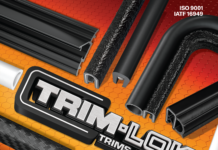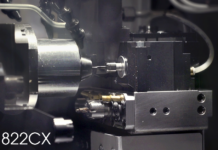For more than a half-century, material scientists have known that the theoretical answer to this question is ‘yes’. This understanding is based on a phenomenon known as RCT (Radial Chip Thinning). RCT has to do with the behavior of cutting tools when stepovers are 50% or less. As stepovers decrease, tool wear decreases too, as long as the chip load remains constant. As stepovers are decreased, material removal rates must be increased to maintain constant chip loads and manage heat removal so that the cutting tool does not fail prematurely.
So not only is it possible to have reduced tool wear and increased material removal at the same time, it is required if you are going to take full advantage of RCT.
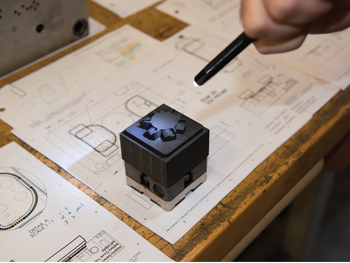 Unfortunately, there was no practical way for CNC users to take advantage of this theoretical knowledge until recently. During the last half-decade or so, all of the technology developments required to make the theoretical advantages of RCT practical for shops of any size have finally caught up with the theory.
Unfortunately, there was no practical way for CNC users to take advantage of this theoretical knowledge until recently. During the last half-decade or so, all of the technology developments required to make the theoretical advantages of RCT practical for shops of any size have finally caught up with the theory.
• Reasonably rigid CNC machine tools with repeatable feeds and speeds (not necessarily high speed).
• High-end cutting tools with geometries and coatings created to optimize material removal for specific grades of material.
• Responsive machine controllers that can adapt quickly to dense sets of CNC program instructions.
• Material-aware CAM software technology that has the intelligence to quickly generate CNC programs based on actual material conditions ahead of the tool—rapidly adapting the machine and tool motions to maintain a constant chip load according to the manufacturers’ recommendations (e.g. Mastercam’s Dynamic Motion technology.)
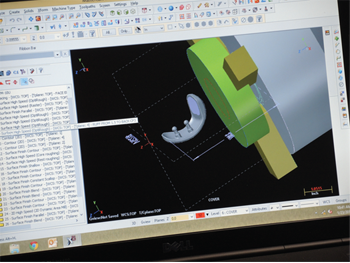
These technologies are all readily available and most shops have at least some machines or cells where they can immediately take advantage of constant chip load roughing strategies today. Getting up-to-speed with them only requires spending a little time learning how they work and how to use them correctly. Once this very low hurdle has been cleared, it is actually faster and easier to use this approach to roughing.
The focal point for applying constant chip load roughing in a shop is the CAM software. Mastercam with Dynamic Motion technology brings all the required technologies together, making it fast and easy to create roughing programs that use advanced cutting tools.
Dynamic Motion Technology Paybacks
Cutting tools frequently represent a very high percentage of a manufacturing business’ operating expense. Dynamic Motion technology used at constant chip loads according to the manufacturers recommendations have resulted in up to 5x improvements in cutting tool life. In many shops, those savings would pay for one or more additional CNC machines.
With Dynamic Motion technology, improved material removal rates go hand in hand with reduced cutting tool wear. With shallower stepovers but deeper stepdowns, today’s advanced cutting tools will last longer, as they continually bite into enough material to carry the heat away from the cutting tool and the material.
Based on what your machine can handle (and this is very easy to determine), you can progressively decrease stepovers and increase speeds until you arrive at the “sweet spot” where you have the best balance of material removal volume and tool life. Both will almost always be better than results on conventional aggressive hogging out strategies that rely on >50% stepovers and shallow depths of cut.
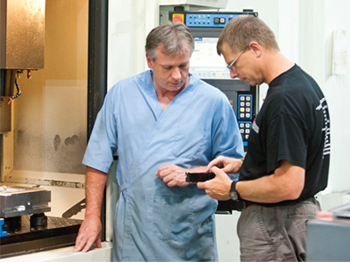
Dynamic Motion technology users report that they are creating part programs for roughing faster. What used to take hours can frequently be accomplished in minutes.
Why is this? Dynamic Motion technology automatically makes many adjustments in tool movements that create ultra efficient, ultra smooth toolpaths that avoid burying the tools so that the cutting tool, part, and your machine are always in a safe cutting condition.
It is possible to write cutting programs like this manually, but it takes hours upon hours to do it right, and then single step through it at the machine to make sure every line of code is correct. Using Mastercam’s toolpaths with Dynamic Motion technology allows programmer/machinists to be much more productive.
They frequently work in cells with two or more machinists alternating between writing programs and loading and unloading machines. This technology can also be an excellent complement to high density machining strategies where many parts can be manufactured in a single setup. It also significantly improves the productivity of machinists who work in the one-off manufacturing world.
Because of the powerful and comprehensive material-aware algorithms employed, and the extensive testing conducted prior to release, toolpaths using Dynamic Motion technology are among the safest that Mastercam has ever offered. Once you have gained a little experience with Dynamic Motion technology toolpaths, you can proceed with great confidence that it can be run safely unattended. Expanding the percentage of work that can be done unattended, particularly on a lights-out basis, can reduce the pace of capital equipment acquisition and make a significant contribution to labor cost reduction.










